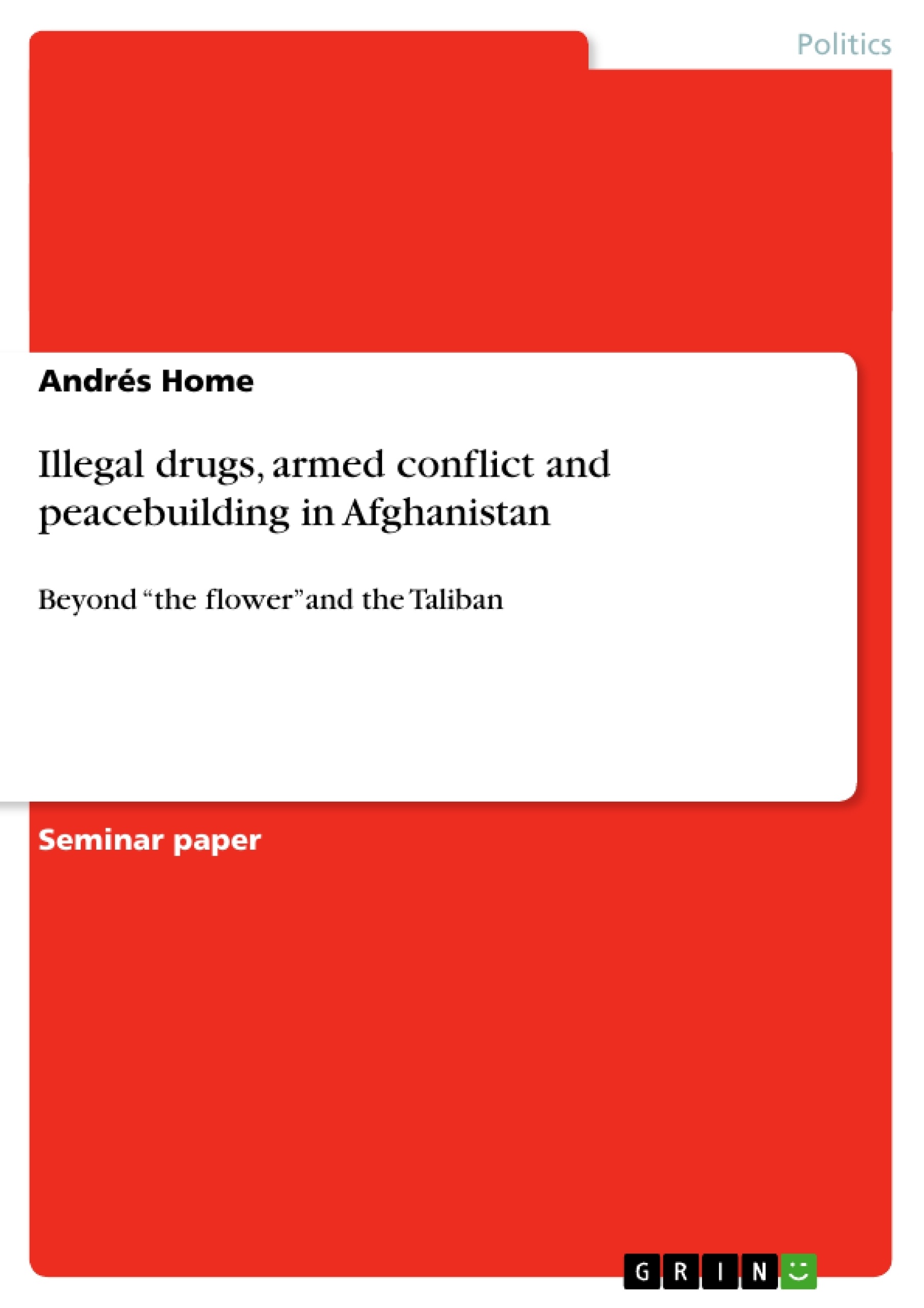Examining the links between illegal drugs and armed conflicts, Svante E. Cornell (2005:758) suggests that “the interaction […] is more complex than it seems at first glance, but it has important implications for strategies of conflict resolution as well as for counter-narcotics efforts”. It is clear that some of the most illicit drug crops and industries are concentrated in countries, regions and communities where the rule of law is weak and these areas are often characterized by social turmoil, instability and violence (Thoumi 2007: 126); this fact suggests that there is a nexus between illegal drugs and armed conflicts. Regarding this type of link some recent literature suggests that “narcotics extend the duration of conflict” (Cornell 2005: 751). Authors attempting to explain this nexus tend to refer to the concept of “war economies” which highlight the economic incentives as driving forces in contemporary violent conflicts (Cornell 2005: 752). According to John Goodhand (2005:213), “war economy has become a catch-all-phrase which is seen automatically as something negative and predatory”. This simplification is reflected in eradication and drug control efforts based on the discourse of predation and profit without considering the “micro-practices and institutional arrangements” surrounding the illegal drug economies (Goodhand 2005: 213).
Inhaltsverzeichnis (Table of Contents)
- Introduction
- Theoretical framework
- Relation between illegal drugs and armed conflicts
- Some ideas on the casual mechanisms of the relation between illegal drugs and armed conflicts (a vicious circle)
- The transition from war to peace
- Interaction between illegal drugs and the armed conflict in Afghanistan
- The development of the opium economy in Afghanistan
- Implications
- The impact of the interaction “illegal drugs and armed conflict in Afghanistan” on the transition from war to peace
- Looking for a “peace dividend” in Afghanistan
Zielsetzung und Themenschwerpunkte (Objectives and Key Themes)
This paper examines the complex relationship between illegal drugs, the Afghan War, and the prospects for peacebuilding in Afghanistan. The main objective is to analyze the extent to which the opium economy influences the peace process. The author argues against a simplistic causal relationship, proposing instead a continuous interaction where the opium economy fuels the conflict, and conflict in turn stimulates opium cultivation and trade.
- The nexus between illegal drugs and armed conflict in Afghanistan.
- The role of the opium economy in fueling the Afghan War.
- The impact of the opium economy on peacebuilding efforts.
- The challenges of integrating counter-narcotics policies with peacebuilding initiatives.
- The political dimensions of opium production and trafficking.
Zusammenfassung der Kapitel (Chapter Summaries)
The introduction establishes the paper's central research question: how does the relationship between the opium economy and the war in Afghanistan affect peacebuilding? It highlights the complexity of this relationship and the need to move beyond simplistic views of "war economies."
The theoretical framework section explores two main approaches to understanding the link between illegal drugs and armed conflict: the "economics and conflict" approach and the "crime-rebellion nexus" approach. It also discusses the transition from war to peace.
The chapter on the interaction between illegal drugs and the armed conflict in Afghanistan examines the development of the opium economy and its implications. This includes an analysis of the various actors involved and their motivations.
Schlüsselwörter (Keywords)
Keywords: Afghanistan, illegal drugs, opium, armed conflict, peacebuilding, war economy, counter-narcotics, peace dividend, Karzai, Taliban, insurgency.
- Quote paper
- Andrés Home (Author), 2008, Illegal drugs, armed conflict and peacebuilding in Afghanistan, Munich, GRIN Verlag, https://www.grin.com/document/124852



